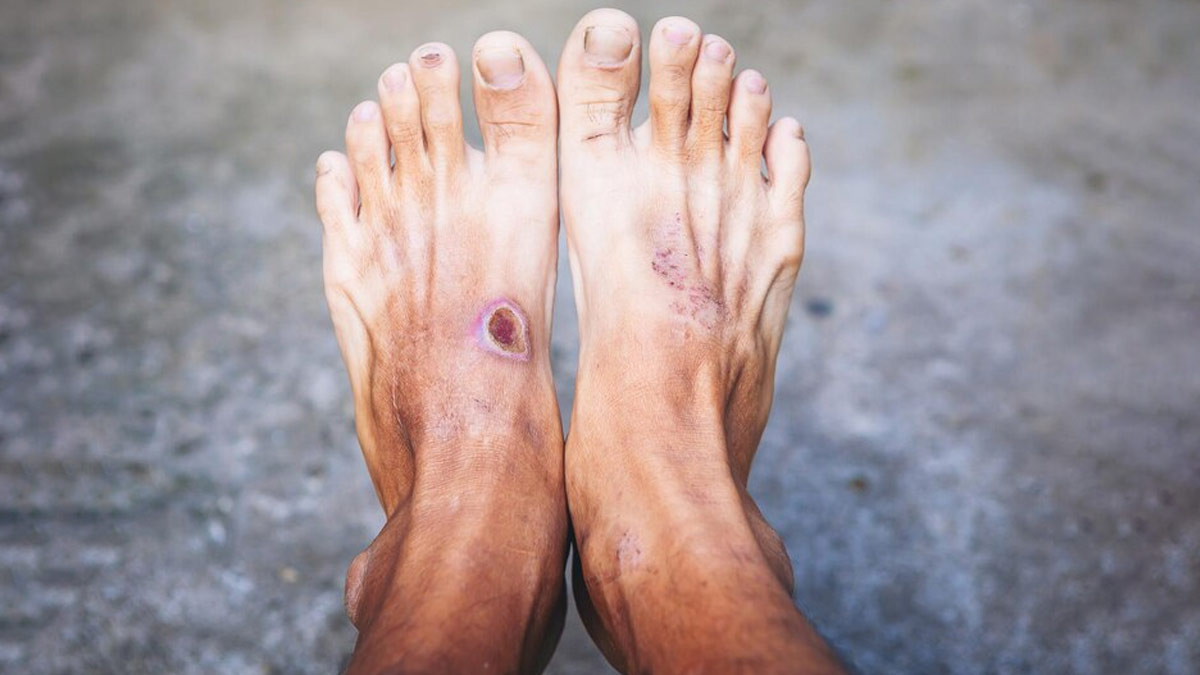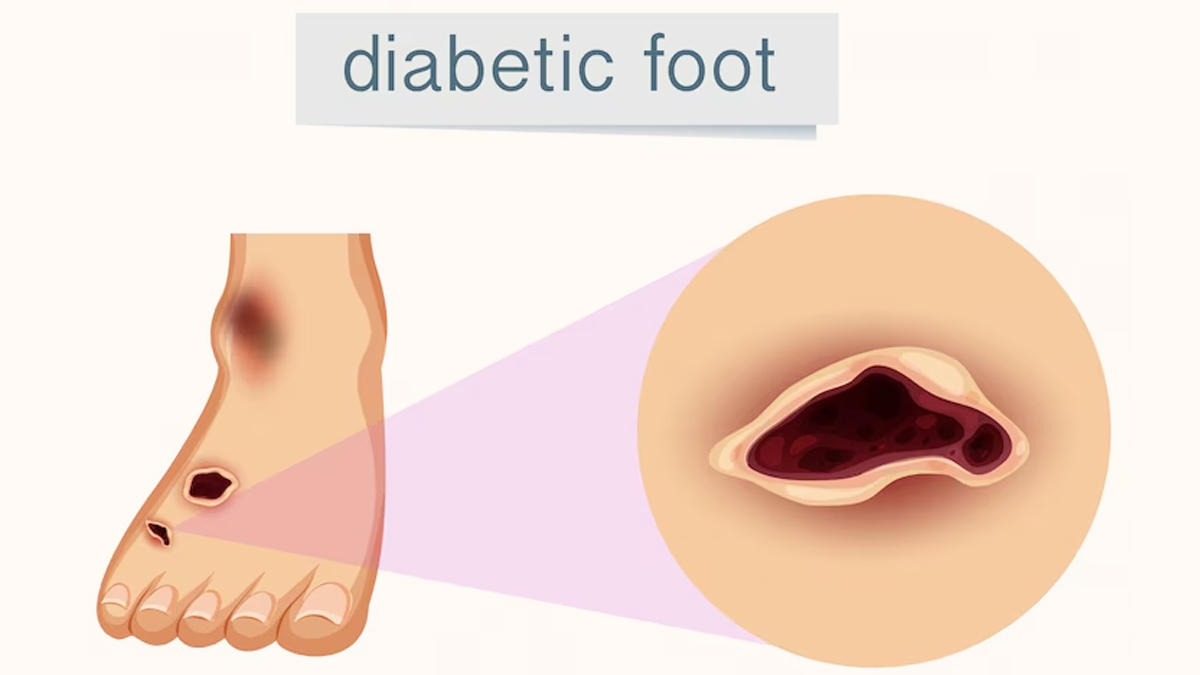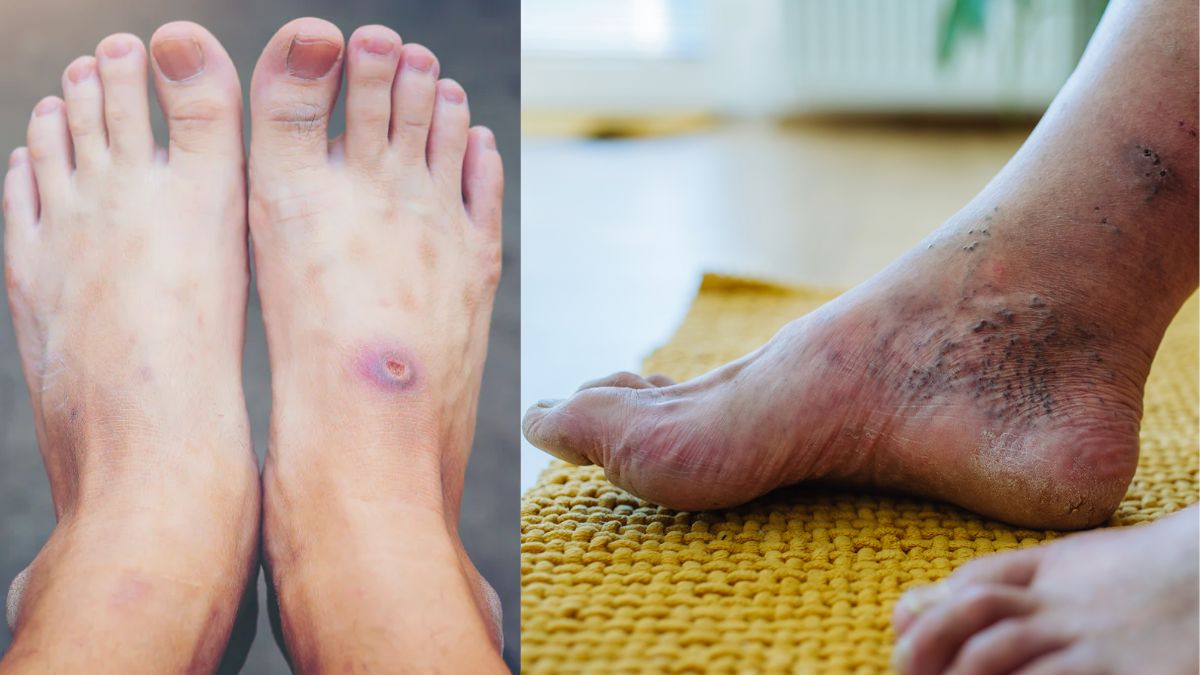
For many people living with diabetes, the daily focus is usually on diet, sugar levels, and medication. But here’s the thing most of us forget, your feet often show the earliest signs of trouble. And ignoring them can lead to serious complications. As World Diabetes Day 2025 approaches, it’s a good time to slow down, pay attention, and understand what diabetic foot really looks like. On the occasion, here’s what you need to know to protect yourself or someone you love.
Table of Content:-
To help break it down, Dr Dilipan Selvam A, Consultant - Internal Medicine, Apollo Specialty Hospitals, Vanagaram, Chennai, explains the key symptoms, early warnings, and steps that can prevent serious foot problems.
Common Symptoms of Diabetic Foot Problems![]()
Dr Selvam says the first signs often start small, but they matter. “We usually look for numbness, tingling, burning pain, cracked skin, slow-healing wounds, and loss of sensation,” he explains. These signs indicate early nerve and circulation issues. Common symptoms include:
- Numbness or tingling
- Burning or sharp pain
- Dry, cracked skin
- Corns or calluses
- Wounds that heal slowly
- Loss of sensation in the feet
- Changes in foot shape
When the nerves become weak, even a tiny injury can go unnoticed. And this is how bigger problems begin.
Why Early Warning Signs Matter![]()
Detecting changes early can literally save your foot. According to Dr Selvam, “If you notice changes like redness, swelling, cuts, or numbness, your doctor can treat it before it becomes serious.”
Early detection helps prevent:
- Foot ulcers
- Skin infections
- Bone infections
- Gangrene
- Amputations
A small redness today can turn into a deep ulcer within days if ignored. That’s why daily foot checks are crucial for diabetics.
ALSO READ: World Diabetes Day 2025: Diabetic? Expert Shares Tips To Boost Your Odds of a Healthy Pregnancy
What Causes Diabetic Foot Ulcers and Infections?![]()
Not all wounds are equal when diabetes is involved. Dr Selvam explains that three major reasons lead to ulcers:
- Nerve damage: “You may not feel a small injury or shoe bite.”
- Poor blood circulation: The wound doesn’t heal fast.
- High sugar levels: Even minor cuts can become ulcers.
- When blood sugar stays high, healing slows down. Bacteria also grow faster, increasing the risk of infections.
The Role of Diabetic Socks: Do They Help?![diabetic socks diabetic socks]()
Many people wonder whether diabetic socks are worth it. According to Dr Selvam, the answer is yes. “Diabetic socks reduce pressure, keep the feet dry, improve circulation, and prevent friction. They do not treat diabetes, but they reduce injury risk—especially in people who have numbness.”
Benefits of diabetic socks include:
- Less friction and rubbing
- Better moisture control
- Lower risk of blisters
- Support for blood flow
- Reduced pressure on sensitive areas
They are especially helpful for people with neuropathy or poor circulation.
When Does a Foot Ulcer Become a Medical Emergency?![World Diabetes Day diabetic foot World Diabetes Day diabetic foot]()
Sometimes, waiting even a day can be dangerous. Dr Selvam lists the red-flag symptoms that need urgent care:
- Wound turning black
- Foul smell or pus
- Swelling or fever
- Sudden increase in pain
- The foot becoming cold or discoloured
These signs point towards serious infection or dangerously low blood flow.
Daily Foot-Care Habits Every Diabetic Should Follow
Routine matters more than you think. Dr Selvam strongly advises:
- Check your feet every night
- Wash and dry them carefully
- Moisturise (except between the toes)
- Wear soft, well-fitting footwear
- Never walk barefoot
- Trim nails straight
- Change socks daily
- Small daily habits prevent major medical issues later.
Lifestyle Changes That Reduce Risk
According to Dr Selvam, long-term lifestyle changes protect your feet as much as medicine does. He recommends:
- Keep sugar levels under control
- Quit smoking to improve circulation
- Maintain a healthy weight
- Walk daily to promote blood flow
- Manage blood pressure and cholesterol
- Get foot check-ups every 3–6 months
These steps reduce the chances of nerve damage and circulation problems.
A 2023 study published in The Journal of Diabetes Research found that up to 25% of people with diabetes develop a foot ulcer at some point, and poor nerve function was the biggest predictor of complications. The study showed that early screening and specialised footwear reduced ulcer risk significantly.
ALSO READ: World Diabetes Day 2025: Is Cheese A Bane Or Boon For Diabetic Patients? Expert Decodes
Conclusion
Diabetic foot problems rarely appear overnight. They build slowly, through tingling, numbness, dryness, small cuts, and unnoticed injuries. On World Diabetes Day, it’s a reminder that foot care is not optional for people with diabetes. As Dr Selvam explains, early checks, the right footwear, controlled sugar levels, and timely medical help can prevent serious complications. Small steps today can protect your mobility, independence, and long-term health.
Also watch this video
How we keep this article up to date:
We work with experts and keep a close eye on the latest in health and wellness. Whenever there is a new research or helpful information, we update our articles with accurate and useful advice.
Current Version
Nov 14, 2025 10:31 IST
Published By : Vivek Kumar




